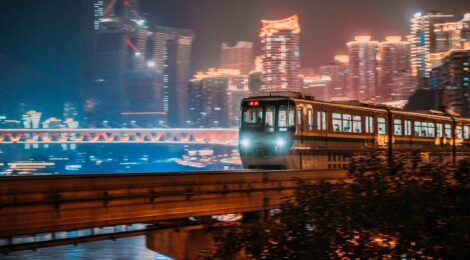
Make the impossible possible: the development of Chongqing Rail Transit system (Part 2)
Greetings dear readers! In April 2019, we introduced the preliminary construction of Chongqing rail transit (CRT)–after careful consideration, experts and engineers in the field of rail transit decided to build Line 2 and Line 3 with straddle-type monorail technology that can cope with the complex geographical environment in Chongqing and has a relatively low construction cost.
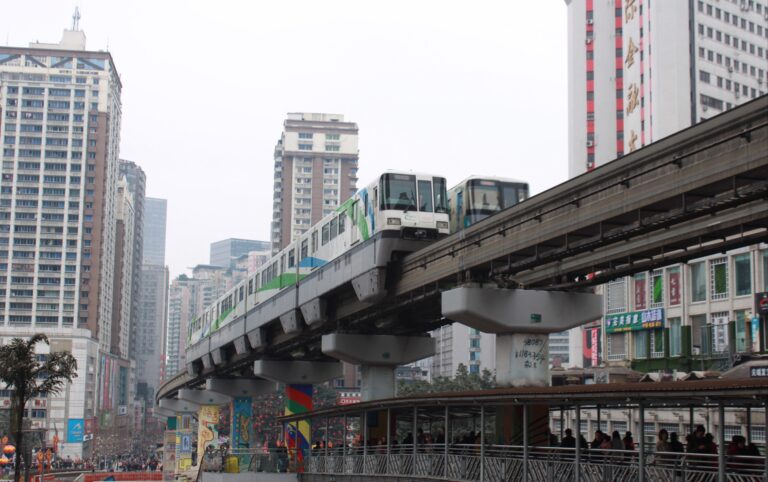
CRT Line 2
Because of the limited capacity of monorail train , coupled with China’s significant progress made in shield tunneling machine that dramatically dropped the cost of subway construction costs, (In 2008, China’s first complex shield tunneling machine with independent intellectual property rights was successfully rolled off the production line), the rail transit construction in Chongqing mainly adopted the way of subway, only to continue using the monorail technology in Konggang Line.
According to the statistics from the China Association of Metros, as of September 30, 2020, there are 10 lines of rail transit in operation in Chongqing, including line 1, 2, 3, 4, 5, 6, 10, Loop Line, Guobo Line and Konggang Line, covering a total length of 328.5 kilometers, ranking the 7th nationwide and the second in western China, of which 230 kilometers of subway, 98.5 kilometers of monorail. Altogether there are 170 stations connecting the whole rail transit system, carrying 2.854 million passengers a day and more than 1 billion passengers a year.
Even faced with the impact of the outbreak of the COVID 19 this year, the Chongqing Rail Transit Group didn’t slow down much of its pace in construction. A total of 22 km new route was planned to be connected at the end of this year including the route from Xiaoshizi station to Chaotianmen station on Line 1, Chongqing Library station to Er’lang station on the Loop Line and Yuelai station to Shaheba station on Line 6 (the second phase), which will realize a complete coverage of rail transit network among all nine central urban areas. Tourists visiting Chongqing can directly take rail transit from Chongqing airport or railway station to Chaotianmen and enjoy the night view of the two rivers. The Loop Line, which is operated in a “closed loop”, will also make the travel of citizens more convenient.
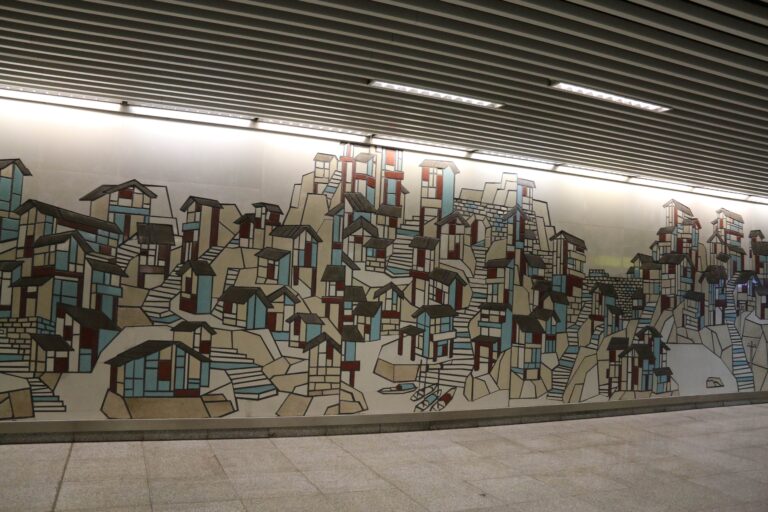
The decoration of Lianglukou Station
Among all stations in service, there are a number of sites that are also quite distinctive in addition to the popular Li Ziba station. Let’s look at some examples. The Hongtudi Station, 60 meters below the ground, is the deepest subway station in Chongqing. The Tongyuanju station under the south end of the Caiyuanba Yangtze River Bridge has been favored by movies and television works due to the Sujiaba overpass with a height of 72 meters beside it and the winding footbridge. It was featured in Chongqing Hot Pot in 2016 and Better Days in 2019. The Ciqikou station, which is popular with tourists, chose “Chongqing Dialect” as the design element, showing the local language features and unique folk culture of Chongqing to passengers through vivid and interesting pictures and explanations. At Ping’an Station on Line 2, a nearly 90-degree turn is visible, showing the flexibility of monorail technology with a small turning radius and giving passengers a roller-coaster experience.
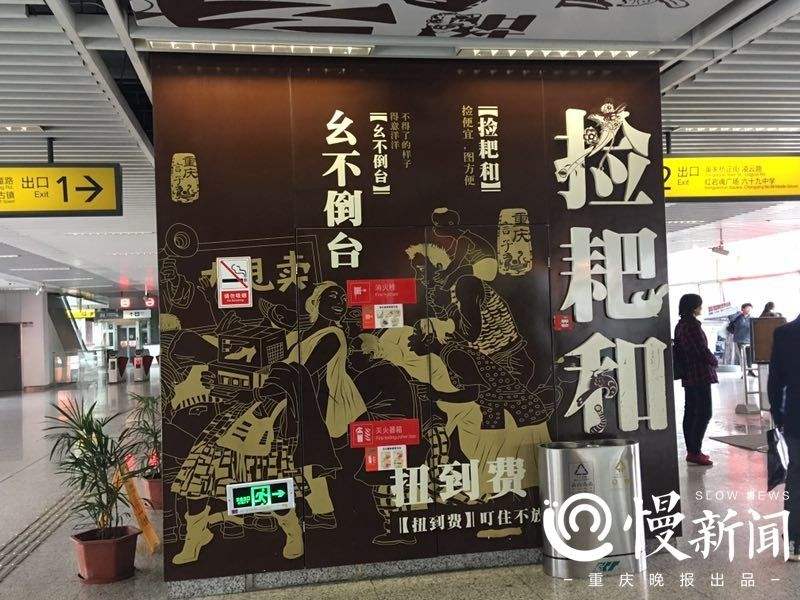
“Chongqing Dialect” of Ciqikou Station
In addition, in order to promote the construction of Chengdu-Chongqing twin city economic circle, Chengdu-Chongqing rail transit has realized the reciprocal recognition of bus code on July 27 this year. That is to say, passengers with “Chengdu Metro App” installed in their mobile phones can directly scan the code to take the Chongqing rail transit, and conversely, passengers with “Chongqing Metro App” can also take the Chengdu rail transit. The integration of the transportation systems of the two cities installed the engine for their economic development. Endless traffic flows through the unimpeded pipe network, creating wealth and finally realizing the common development of the two cities.
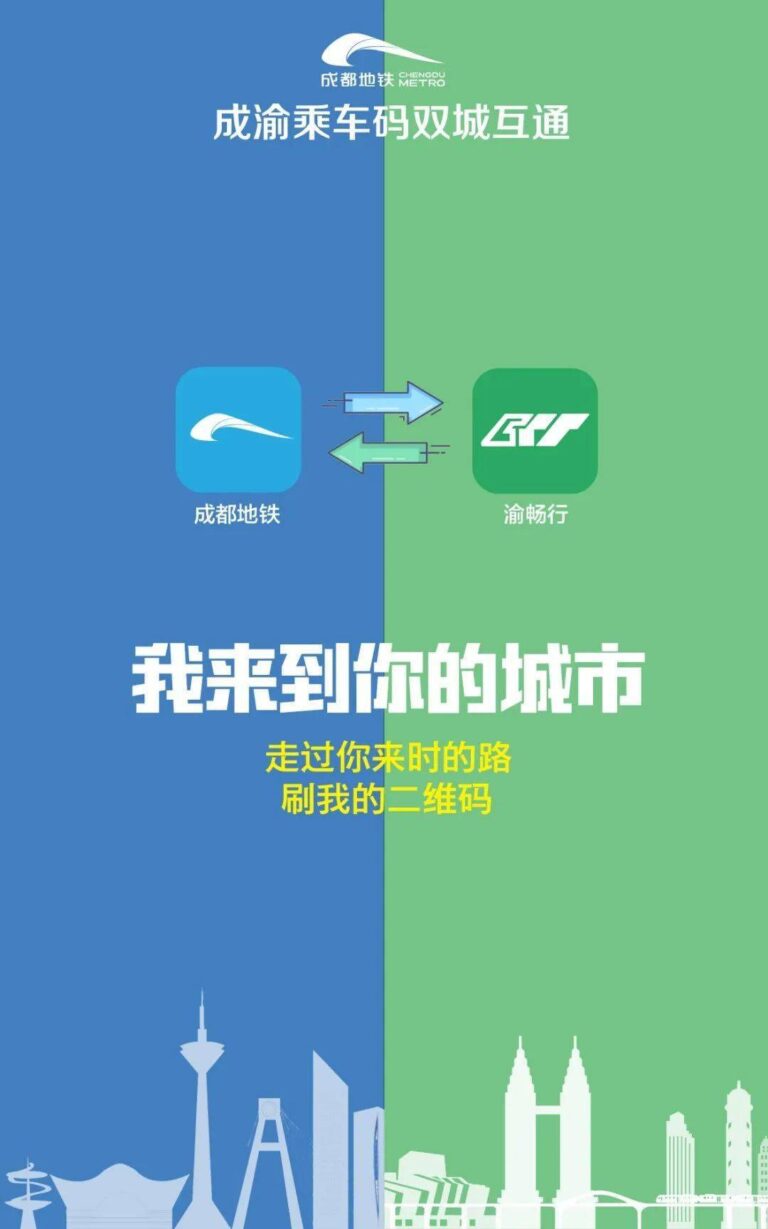
In September this year, the National Development and Reform Commission approved the Fourth Phase of Chongqing Urban Rail Transit Construction Plan (2020~2025), with 198 kilometers of construction planned for the fourth phase. When it is completed, Chongqing will have a huge rail transit network of more than 500 kilometers with “seventeen lines and one loop”, and will become a livable metropolis with convenient transportation.
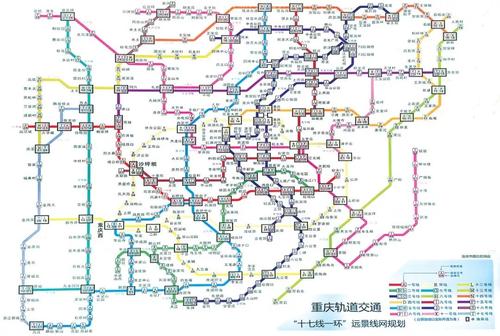
Long-range planning of “17 lines and 1 loop line”
Since its establishment in 2007, Galileo Galilei Italian Institute has been following the development and changes of Chongqing and trying to introduce to readers every bit of this beautiful city. We look forward to your continued attention. See you next time!
Zhang Yangxin




